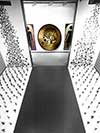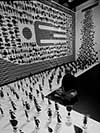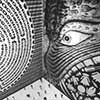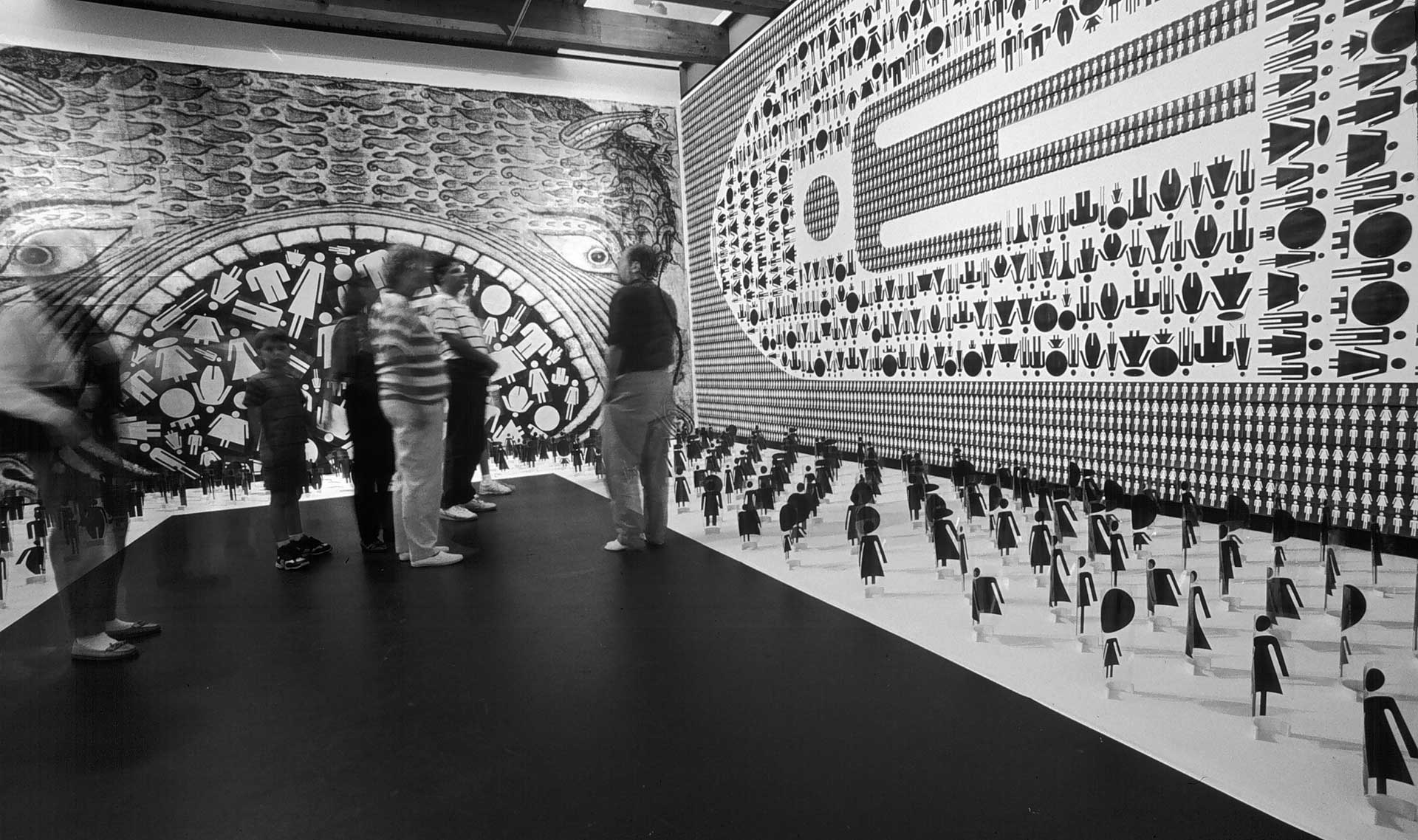douglas Kornfeld
"Pathways to Damnation and Redemption" - 1997
Location: Fuller Art Museum, Brockton, MA
Materials: Over 10,000 laser-printed images, stapled to the gallery walls.
Commissioned by: Fuller Art Museum
This immersive installation filled the entire gallery with over 10,000 laser-printed images, each stapled directly to the walls. At the front of the room stood a monumental image—14 feet high and 26 feet wide—composed of more than 800 sheets of paper. The central image, titled Entrance to Hell, was digitally altered from a 12th-century Psalter engraving. Hundreds of 2D figures appeared to spill from openings in the back walls’ air-conditioning vents and tumble downward. Upon reaching the floor, they became three-dimensional and continued marching across the gallery floor into the gaping mouth of a monstrous figure, suggesting a descent into chaos and judgment.
(Click on the thumbnails below to see an enlarged version on the right.)












The left wall, Pathway to Redemption, featured intricate maze designs derived from the floor of a medieval cathedral in France. Historically, walking these mazes symbolized a spiritual pilgrimage to Jerusalem—a metaphorical journey toward enlightenment and salvation. In the installation, each maze contained a symbol at its center: a standard female icon on the left, and a standard male icon on the right—surrounded by diverse variations in shape and form. These human icons varied in height, weight, and proportion, celebrating difference and individuality. Surrounding the mazes were rows of more than 3,000 individual slips of paper, each printed with a standard male or female icon. These repetitive figures formed a backdrop that starkly contrasted the diversity found within the maze paths.

On the the right wall, “Pathway to Damnation,” portrayed an altered slave ship diagram, based on an original 18th-century engraving.Where the historical diagram rendered enslaved individuals as generic figures dehumanizing them as mere cargo. In this reinterpretation, the figures were replaced with diverse male and female icons in varied shapes and sizes, restoring individuality and confronting viewers with their humanity. The new diagram confronted viewers with both historical suffering and how the generic rendering of the figures allowed moral detachment. Around the ship, more than 3,500 icon-printed slips of paper were arranged in rows, gently stirred by the gallery’s air-conditioning, evoking the waves of water surrounding the ship.
"Pathways to Damnation and Redemption" invited viewers to physically and emotionally navigate the tensions between exclusion and inclusion, uniformity and diversity, despair and hope.